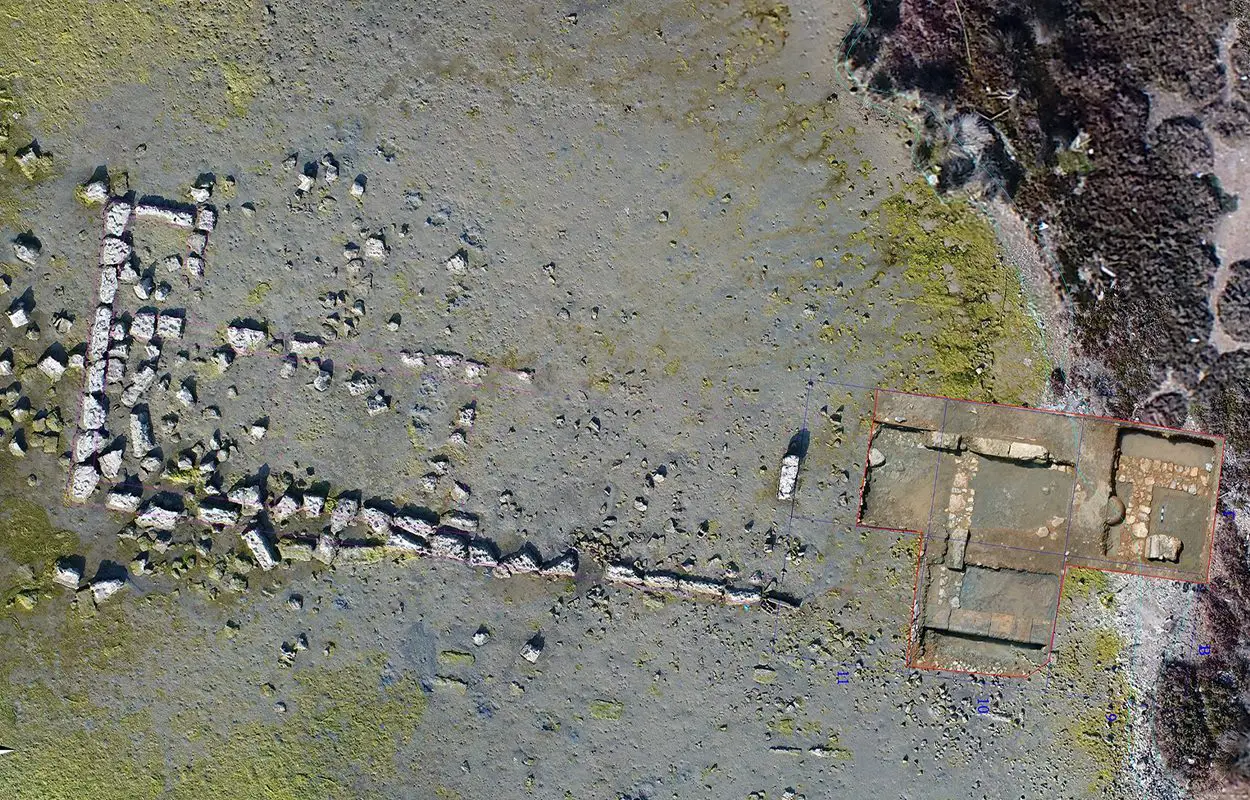A team of underwater archaeologists conducting research on the eastern shores of ancient Salamis have uncovered a large partially submerged stoa complex that formed part of the agora public space.
According to Homer’s Iliad, Salamis took part in the Trojan War with twelve ships under the leadership of Ajax (Aias).
As part of a joint research project between the Institute of Marine Archaeological Research, the Ephorate of Marine Antiquities, and the University of Ioannina, underwater archaeologists have conducted a three-year program to study the eastern shores of the city at the north-western side of the Ambelaki-Knosoura marine area. Previous studies have identified sunken remains of the Classical city, including large sections of the sea wall and submerged ruins of public buildings.
Excavations within the former landside of the sea wall have revealed a large, long and narrow public building identified as a stoa. A stoa is a covered walkway or portico where merchants could sell their goods, artists could display their artwork, and religious gatherings could take place. Stoas usually formed part of the agora, a central public space in ancient Greek city-states.
The stoa measures 32 metres in length and contains at least 6-7 rooms with internal dimensions of 4.7 x 4.7 metres. Various artefacts and objects were uncovered during the excavations, including ceramics from the Classical-Hellenistic period, amphora stoppers, fragments of marble objects, and 22 bronze coins.
Of the marble objects, two are of particular importance and date from the 4th century BC. One is a column with part of an inscription in fragmentary verses, and the other is part of a stele showing a muscular right hand of a large figure. The stele corresponds with a marble stele housed in the Archaeological Museum of Salamis which dates from around 320 BC.
According to the researchers: “The identification of the Stoa is a very important new element for the study of the topography and residential organization of the ancient city. It is open to the west and probably marks the eastern boundary of the Agora area of the Classical-Hellenistic city rather than the port, extending on generally level ground to the west/northwest of the building.”
Header Image Credit : Ministry of Culture





